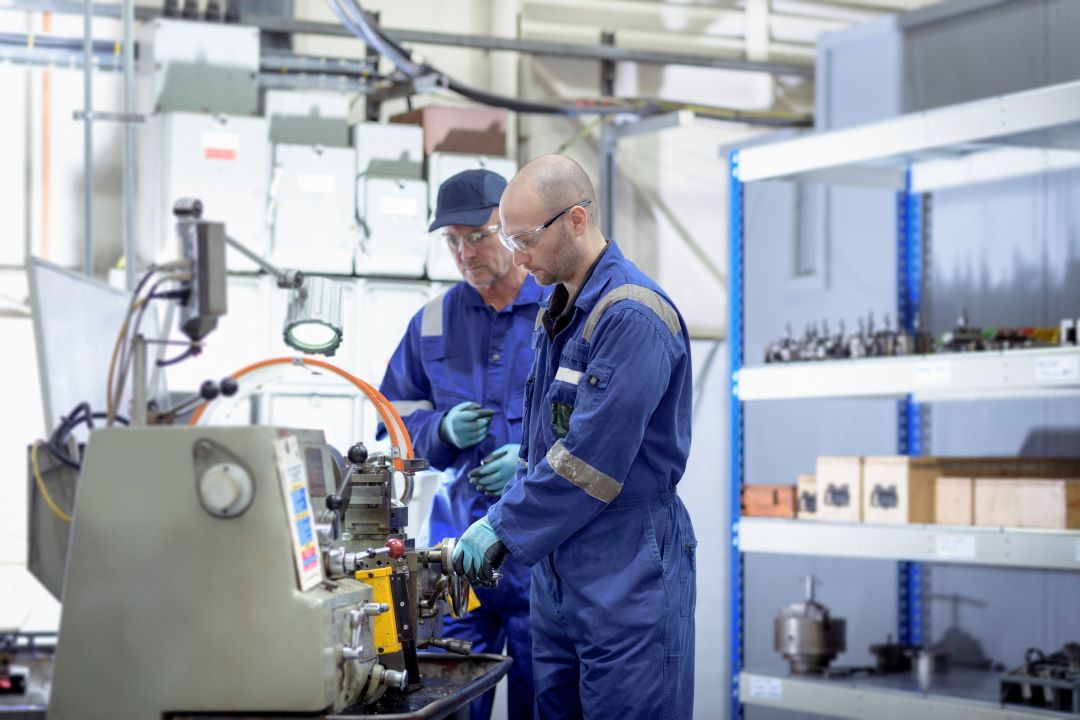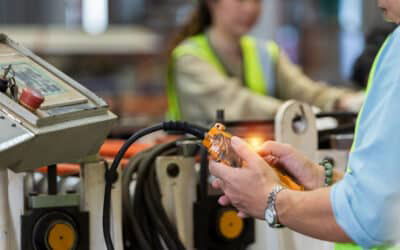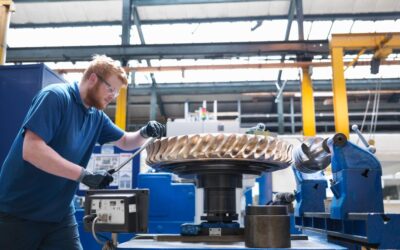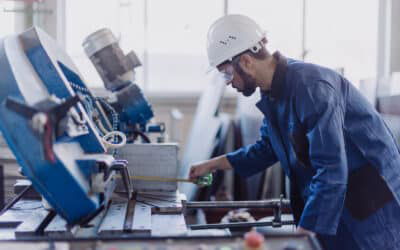Total Productive Maintenance (TPM) is a comprehensive approach to maximizing equipment efficiency. Total Productive Maintenance is a comprehensive approach to maximizing equipment efficiency by involving all employees in the maintenance process. By focusing on reducing breakdowns and losses, productive maintenance promotes organizational performance and productivity. It implements rigorous methods that increase quality and extend machine life, while reducing downtime.
What is total productive maintenance?
Definition and basic principles
It’s a proactive maintenance management method, involving all employees, from operators to managers, in the management and maintenance of machines. The main aim is to reduce unplanned downtime and improve equipment performance by maintaining optimum quality levels throughout the production process. This approach eliminates losses due to breakdowns and inefficiencies.
History of total productive maintenance
Born in Japanese factories in the 1970s, this method was developed by Nippondenso, a Toyota supplier. Inspired by the concept of preventive maintenance, it rapidly evolved into a global equipment management method. The model then spread throughout the world, becoming an essential pillar of continuous improvement in many companies seeking to optimize their production.
The pillars of total productive maintenance
Case-by-case improvement
Case-by-case improvement (Kaizen) is an essential pillar of Total Productive Maintenance. It involves analyzing production process data to identify and eliminate recurring or one-off problems affecting machine performance. Each improvement activity aims to reduce wasted time, breakdowns and inefficiencies, thus contributing to sustainable productivity gains.
Autonomy
Employee autonomy is crucial to total productive maintenance. Operators are specifically trained to carry out basic maintenance tasks on the equipment they use on a daily basis. This empowerment enables minor problems to be detected quickly, before they turn into costly breakdowns, while increasing team commitment and machine reliability.
Quality maintenance
Quality maintenance focuses on preventing defects by integrating control methods right from the early stages of production. The aim is to maintain a constant level of quality by identifying potential failures before they result in defects or breakdowns. This pillar reduces losses due to production errors and improves equipment reliability.
Planned maintenance
Planned maintenance consists in anticipating interventions on machines before they break down. By analyzing data on equipment uptime, companies can plan maintenance shutdowns at strategic times, minimizing production interruptions and guaranteeing business continuity.
Preventive equipment maintenance
This pillar concerns maintenance actions carried out right from the equipment design stage, in order to reduce future problems. The aim is to integrate maintenance into the machine design phase to guarantee reliability and ease of maintenance. This approach avoids unscheduled downtime and extends the life of equipment right from the start.
Safety, health and environment
This pillar aims to ensure that equipment maintenance is carried out in a safe environment for employees. By reducing the risk of injury and guaranteeing safe working conditions, it helps to improve overall workplace safety, while complying with environmental and health standards. This helps prevent accidents and boosts team efficiency.
Why adopt total productive maintenance in your organization?
Objectives and benefits
Total Productive Maintenance achieves a number of crucial objectives for any organization: improving equipment performance, reducing breakdowns and production losses, while guaranteeing better product quality. Benefits include reduced downtime, optimized work processes and improved employee commitment. By integrating TPM, the company optimizes machine utilization and improves overall productivity and profitability.
Implementing total productive maintenance
Steps to integration
Integrating Total Productive Maintenance (TPM) into an organization involves several stages. First, it’s essential to train staff, especially operators, to get them involved in the project. Next, equipment data must be analyzed to identify recurring problems. Finally, an improvement plan is implemented with the collaboration of the teams to eliminate breakdowns, reduce production losses, and optimize processes.
Tools and resources required
Effective implementation of total productive maintenance requires maintenance management tools, such as equipment tracking software and performance indicators. Dedicated human resources for employee training are also crucial to ensure that every operator can contribute to machine maintenance. In addition to diagnostic tools, it’s important to have a committed team in place to anticipate and resolve problems before they lead to unplanned downtime.
Practical application examples
In an industrial production company, this can take the form of regular training for operators in the day-to-day upkeep of machines. For example, the implementation of planned preventive maintenance helps to reduce production stoppages due to breakdowns. Teams are organized into dedicated workgroups, responsible for the quality of each piece of equipment, which considerably improves overall performance and reduces losses.
The benefits of this method
Reducing Downtime
One of the main benefits is the reduction in unplanned production stoppages. By optimizing equipment maintenance, companies reduce frequent breakdowns. This helps to reduce downtime and maintain a continuous flow of production. Better machine management ensures increased availability, enabling the organization to meet production deadlines and customer needs.
Improving overall productivity
Total Productive Maintenance leads to a significant improvement in productivity. By implementing efficient maintenance processes and involving every employee, companies can eliminate unnecessary losses. Maintenance teams and operators work together to detect problems before they affect production. This proactive approach helps optimize resources and use equipment more efficiently, improving overall performance.
Impact on customer satisfaction
By reducing breakdowns and quality losses in the production process, it has a direct impact on customer satisfaction. Products are delivered on time, with consistent quality, reinforcing customer confidence in the company. Proactive maintenance helps avoid delays, ensuring that production targets are met while meeting customer quality expectations.
Total Productive Maintenance FAQ
What is the TPM method?
The TPM (Total Productive Maintenance) method is a management system designed to optimize equipment efficiency by involving all employees in machine maintenance. The aim is to improve production performance and quality by eliminating losses and reducing breakdowns. This process enables the company to maintain a high level of productivity and efficiency.
Who invited him?
TPM was developed by Japanese company Nippondenso, a key Toyota supplier, in the 1970s. The project was born of the need to reduce downtime and maximize equipment productivity. Since then, the method has spread throughout the world, becoming a benchmark for many companies seeking to improve their overall performance.
What are the main pillars of this method?
TPM is based on several essential pillars, including case-by-case improvement, operator autonomy, planned maintenance and quality maintenance. Other pillars include safety, health and environment, and equipment preventive maintenance. Each pillar contributes to an overall approach to maximizing machine performance and minimizing breakdowns.
What is autonomous maintenance?
Autonomous maintenance is one of the pillars of TPM, in which operators are trained to take on basic maintenance tasks on their own machines. This includes activities such as cleaning, inspecting and tightening components. By empowering employees at this level, companies can reduce unplanned downtime and improve equipment reliability, while increasing staff commitment.
Stay connected:
Pour ne rien manquer de l’actualité de TEEPTRAK et de l’industrie 4.0, suivez nous sur LinkedIn et YouTube. Inscrivez-vous également à notre newsletter pour recevoir le récap mensuel !
Ceci pourrait également vous intéresser :





0 Comments